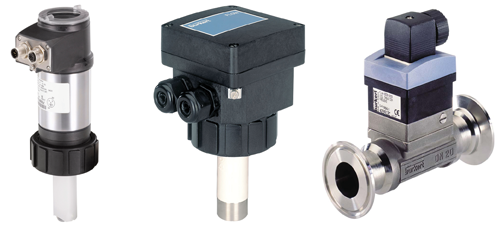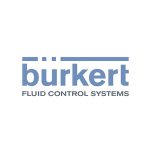Understanding sensors: Flow sensors
In the first of a three-part series of articles, PIF talks to Bürkert process control specialist, Kieran Bennett, about the range of sensors available, the different technologies used in their design and how the application affects the specification.
Flow sensors explained
In any production control system it is crucial to know the quantity of fluid that is actively involved in the process and this is where the flow sensor needs to be able to accurately indicate the flow.
There are a number of different designs which have particular characteristics, making them better suited to a specific application or fluid medium.
Paddle wheel sensors
Paddle wheel designs require direct contact with the fluid and are better suited to fluids with very low solids content, especially media with similar characteristics to water.
“The paddle wheel, which contains permanent magnets, is caused to rotate by the fluid flow and this movement is detected by a Hall sensor located outside the fluid area,” Kieran tells us.
“The integrated electronics then convert this into a square wave frequency signal, which can be used by the process controller,” he adds.
Volumetric sensors
For fluids with higher viscosity, on the other hand, it may be more appropriate to use a volumetric measuring method, consisting of two inter-meshed oval gears, which are caused to rotate by the fluid flow.
One of the gears contains a permanent magnet and the rotary motion is detected by a Hall sensor, which again can be transmitted as a square wave frequency signal.
says Kieran.
“High levels of accuracy can be maintained with this system; however the margin for error increases with thinner fluids and lower flow rates,” he adds.
Both of these designs can be used with aggressive fluids as well as with fluids at higher temperatures, providing that the internal components have been correctly specified.
The construction of the paddle wheel and its bearings along with the sealing materials should be carefully considered against the characteristics of the fluid.
Most sensor manufacturers should be able to offer advice and a range of options to ensure proper compatibility.
Magnetic inductive sensors (Magmeter)
In situations where the fluid is more heavily contaminated but is classed as a conductive media, then the use of a magnetic inductive sensor, also known as a magmeter, may be more suitable.
“Using two electrodes and two solenoid coils, the flow of the fluid induces a voltage between the electrodes and this voltage can be amplified and converted into a standard signal,” continues Kieran.
“The voltage is directly proportional to the flow rate and as such provides very accurate flow data.”
Ultrasonic flow sensors
Increasingly, more applications require non-contact methods of measuring flow, especially with fluids at extreme temperatures and pressures; in these cases ultrasonic flow sensors can be used.
Kieran says: “Although these have been in use for some time, the technology has advanced considerably from single transmitters and receivers to multiple, combined units that use more advanced electronics to improve accuracy.”
Current designs vary between manufacturers, but one example uses a pair of transducers, each working as a receiver and transmitter, located within the wall of the pipe at a specific distance.
Both transducers simultaneously send out an acoustic wave signal, which is reflected by two mirrors in the fluid stream and then detected by the respective sensors.
“Changes in the flow velocity affect the time taken for each signal to travel between the sensors; the greater the difference, the greater the flow,” says Kieran.
“This signal is then converted into an analogue signal, which can be used by the process control software.
Clearly, flow direction is important with this type of sensor and they should only be used where flow is unidirectional, he concludes.
Get the latest process industry news
Interested in receiving even more industry-leading news from Process Industry Forum delivered directly to your inbox? Then sign up to our free newsletter. Bringing you the latest news, trends, innovations and opinion from across the process industry, our exclusive newsletter gives you all the industry insights of the moment in one, easy-to-digest bulletin. Stay ahead of the competition with regular process industry news instalments from PIF.


